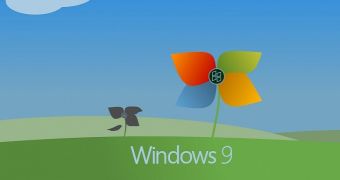Everybody knows that Microsoft is working on Windows 9 as we speak, but the company isn’t talking too much about this project, leaving room for interpretation as to whether specific features could be part of the operating system or not.
But some interesting details about the way Windows 9 is going to change everything for both users and Microsoft have come out today from Microsoft watcher Mary Jo Foley, who writes that this could actually be the last standalone Windows version released by Redmond.
Such a plan actually makes quite a lot of sense, but let’s take things one at a time.
First of all, it’s a well-known fact that Microsoft is planning to switch to a faster release cadence for Windows and most likely for other products such as Office. Steve Ballmer said it, Satya Nadella said it too, and the company’s leadership team will most likely say it again during future events as well.
This fast release cadence basically means that Microsoft is willing to release big updates and improvements for its operating system a lot more often than before, with sources claiming that both fixes and new features are very likely to be part of these rollouts.
Foley says that it’s this faster release cadence that could make Windows 9 the last big standalone Windows version, as after the launch of the upcoming operating system the company will most likely focus on updates and other improvements.
“Instead of delivering Windows 10, Windows 11, Windows 12, Microsoft's focus will be on updating Threshold,” Foley explains, which means that from now on Microsoft might adopt a similar strategy to the one currently used by Apple for OS X.
The most important thing however is Microsoft’s plan for charging buyers for these OS versions, as the company might offer some of the updates for free, while others are obviously expected to come with a small fee.
In the last couple of years, Microsoft launched two major updates for Windows 8, namely 8.1 and 8.1 Update, both of which were offered free of charge, but this could obviously change if a similar strategy is adopted for Windows 9.
One of the reasons that could push Microsoft towards this new approach is the company’s effort to keep users fully up to date and encourage them to keep running the very latest version of the operating system. It already tried such a strategy in Windows 8, but only a few users actually agreed to migrate, so Windows 9 is expected to play a game changer role when it comes out.

 14 DAY TRIAL //
14 DAY TRIAL //